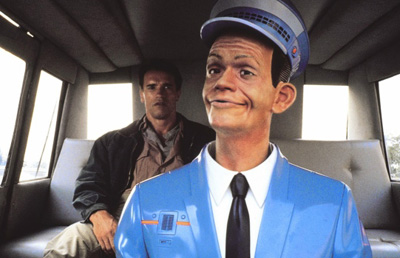When we talk about driverless cars, we usually talk about driverless cars. But I was musing the other day about other driverless vehicles, and in particular how driverless technology will affect mass transit. I suspect it will make mass transit far more useful and more popular. I’m  sure others have written about this in more detail, but here are my musings:
sure others have written about this in more detail, but here are my musings:
- Driverless buses. First of all, if we can build driverless cars, we can also build driverless buses and driverless light rail/subways.
- Cheaper buses. Especially in the case of buses, labor is a big part of the expense of operating a mass transit system. If buses become driverless, mass transit becomes cheaper, and that means metro authorities can afford to run buses more frequently. Frequency is one of the key features that determines how popular mass transit is, so this is a virtuous circle. The cheaper it is to operate buses, the more frequently they can run, and the more frequently they run, the more people will use them. Rinse and repeat.
- The last mile. Driverless cars solve the “last mile” problem. If I want to use a bus or train to commute to Los Angeles, I still need to get from the station to my workplace. If that’s inconvenient—maybe my workplace is two miles away from the nearest bus stop, or maybe I’m just lazy—then I’ll skip mass transit entirely. But it’s easy to see how you could subscribe to a service that would track your progress and have a small driverless car waiting for you when you get off the bus. Hop in the car and it takes you the last mile. And since the car is driverless, it’s cheap and efficient.
None of this means that cars will go away, of course. Commuting via car will also become more appealing if you get to sit back and relax the whole time. That said, if buses can be made a lot more convenient by a combination of more frequent operation and fleets of little cars for the last mile—and a lot cheaper than commuting as well—driverless technology could be the greatest boost for mass transit since the invention of the subway.


















